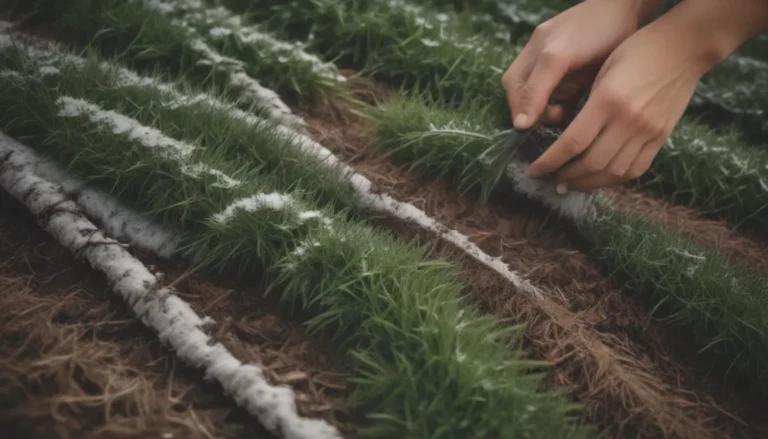A Comprehensive Guide to Growing and Caring for Mint Plants

If you’re looking to add a touch of freshness and flavor to your garden, growing mint plants is a fantastic choice. Mint plants, belonging to the Mentha genus, are hardy perennials known for their fragrant leaves and square stems. They are not only easy to identify by their distinctive scent but also by their opposite leaves and square stems.
In this in-depth guide, we will explore how to plant, grow, and care for mint plants, along with tips on harvesting and propagating them. Whether you’re a seasoned gardener or a beginner looking to add a versatile herb to your garden, this article will provide you with valuable information to help you succeed in growing mint.
Getting Started: Planting Mint
To start your mint-growing journey, it’s essential to know how to plant mint properly. Mint has a reputation for being a vigorous spreader, so it’s best to keep it separated from your other garden plants. Here are some key points to keep in mind when planting mint:
Selecting a Planting Site
- Mint thrives in damp, moist areas with well-draining soil.
- Choose a spot with either full sun or part shade for optimal growth.
- Ensure the soil is fertile and enriched with compost for the best results.
When to Plant
- Plant mint in the spring after the threat of frost has passed.
- Check the last average frost date in your region and plant accordingly.
- Mint can be planted at different times depending on your USDA hardiness zone.
Spacing, Depth, and Support
- Plant mint cuttings or small purchased plants 18 inches to 2 feet apart.
- Mint has a shallow root system, so avoid planting too deep.
- To prevent mint from spreading uncontrollably, consider using edging around the planting area or growing it in a container.
Caring for Your Mint Plant
After planting your mint, proper care and maintenance are crucial for its health and growth. Here are some essential care tips to ensure your mint plants thrive:
Light
- Mint plants prefer part shade but can tolerate full sun with frequent watering.
- Protect them from strong afternoon sun to prevent wilting.
- In shady conditions, mint may become leggy and produce fewer leaves.
Soil
- Mint adapts well to most soil types but prefers rich, slightly acidic to neutral soil.
- Good soil drainage is essential to prevent root rot.
- Water your mint during dry spells to keep the soil lightly moist.
Water
- Keep the soil lightly moist by watering when the top inch feels dry.
- Water in the morning to provide moisture throughout the day.
- Wilting foliage is a sign of insufficient water, so be vigilant in watering your mint plants.
Temperature and Humidity
- Mint plants are adaptable to various temperatures.
- Ensure adequate humidity, especially in low-humidity environments.
- Indoor mint plants may benefit from increased humidity through misting or placing the container on a tray of water-filled pebbles.
Fertilizer
- Feed mint plants with fertilizer once a month during the growing season if necessary.
- Container-grown or plants in poor soil may require additional fertilizer.
- Follow the instructions on the fertilizer label for proper dilution and application.
Types of Mint Plants
Mint plants come in a variety of types, each offering unique flavors and appearances. Some popular mint varieties include:
- Mentha x piperita
- Mentha x piperita f. citrata ‘Chocolate’
- Mentha spicata
- Mentha piperita citrata
- Mentha suaveolens
- Mentha suaveolens variegata
Harvesting and Usage of Mint
Harvesting mint is a simple and rewarding process that allows you to enjoy the fresh flavors of this versatile herb. Here are some tips for harvesting and using mint:
- Harvest mint leaves when the plant has multiple stems that are 6 to 8 inches long.
- Avoid harvesting more than a third of the plant at once to maintain its health.
- Use freshly harvested mint in various recipes, drinks, salads, and more for its aromatic flavor.
Growing Mint in Containers
For those looking to contain the spread of mint plants, growing them in containers is a practical solution. Here are some tips for growing mint in pots:
- Use an unglazed clay container with drainage holes for optimal growth.
- Place the container on a patio or paved area to prevent root spread.
- Consider adding landscaping cloth inside the pot to contain the roots and prevent them from spreading.
Pruning and Propagating Mint
Proper pruning and propagation techniques are essential for maintaining healthy and vigorous mint plants. Here’s how you can prune and propagate mint effectively:
- Trim back your mint plant regularly to prevent runners from spreading.
- Pruning promotes bushier growth and a more attractive appearance.
- Propagate mint through cuttings in the late spring or early summer for new plant growth.
Conclusion
In conclusion, growing and caring for mint plants is a rewarding experience that can enhance your garden with its fresh scent and versatile usage. By following the guidelines provided in this comprehensive guide, you can successfully cultivate flourishing mint plants and enjoy their aromatic leaves in various culinary creations. Whether you’re a seasoned gardener or a beginner, mint plants are a fantastic addition to any garden, providing not only beauty but also flavor and fragrance to your outdoor space. Happy gardening!





